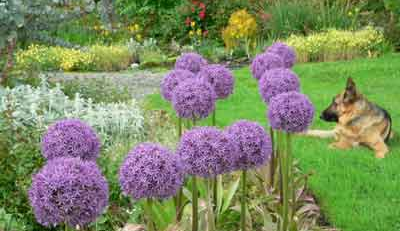The Complete Guide on California Elephant Ears
Introduction
California Elephant Ears, a popular variety of the Colocasia or Alocasia family, is a striking ornamental plant known for its dramatic, large leaves that resemble elephant ears. These tropical beauties are cherished for their bold, architectural presence in gardens and homes. With lush, heart-shaped foliage that comes in shades of green, black, or variegated patterns, California Elephant Ears can transform any space into a vibrant oasis.
Native to tropical and subtropical regions, these plants thrive in warm, humid climates but can also adapt to cooler environments with the right care. Whether grown outdoors as a centerpiece in your garden or indoors as a statement houseplant, these plants are versatile and rewarding to cultivate. This guide will walk you through everything you need to know, from planting and care tips to creative uses and benefits.

What are California Elephant Ears?
California Elephant Ears is a term often used to describe larger, more robust varieties of Colocasia or Alocasia plants that thrive in California’s climate. These plants are part of the Araceae family and are prized for their massive, lush foliage that evokes a tropical vibe. Depending on the specific cultivar, the leaves may feature smooth or textured surfaces, vibrant green tones, or dramatic black and purple hues.
Commonly grown as ornamental plants, they can reach heights of 4 to 6 feet or more, making them a showstopper in any landscape or indoor arrangement. The plant’s roots, also known as taro, are edible in certain species, although proper preparation is required to remove toxins.
The Origins and Cultural Significance of California Elephant Ears
Elephant ear plants have a rich history in tropical and subtropical regions worldwide. Originating from Asia and the Pacific Islands, they have been cultivated for centuries for both ornamental and culinary purposes. In Polynesian culture, taro plants hold spiritual significance and are a staple food source.
California Elephant Ears have gained popularity in the U.S. due to their ability to adapt to various climates, including the sunny and mild conditions of California. Their bold foliage and easy care make them a favorite among gardeners and landscapers seeking to create a tropical aesthetic.
Varieties of California Elephant Ears
There are several stunning varieties of elephant ears that thrive in California’s climate. Some popular options include:
- Colocasia esculenta: Known for its large green leaves and edible roots.
- Black Magic: Features deep purple-black leaves with a matte finish.
- Mojito: Displays green leaves with dark, speckled patterns.
- Thailand Giant: Renowned for its massive size and vibrant green foliage.
- Alocasia Polly: Compact with glossy, arrow-shaped leaves and prominent white veins.
Each variety offers unique characteristics, allowing you to choose the perfect fit for your garden or indoor space.
How to Grow California Elephant Ears from Bulbs
Growing from bulbs is a straightforward process. Follow these steps for successful planting:
- Choose Healthy Bulbs: Select bulbs that are firm and free of mold or rot.
- Soil Preparation: Use nutrient-rich, well-draining soil with a slightly acidic to neutral pH.
- Planting: Bury the bulb 2-3 inches deep with the pointed side facing up.
- Watering: Water thoroughly after planting and keep the soil consistently moist.
- Warmth: Ensure the planting site has a temperature of at least 65°F to encourage sprouting.
With proper care, sprouts should appear within 2-4 weeks, and the plant will establish itself quickly.
Growing California Elephant Ears in Containers
Container gardening is an excellent option for growing California Elephant Ears, especially in areas with colder winters. Here’s how to do it:
- Select a Large Pot: Choose a container with ample space and drainage holes.
- Use the Right Soil: Opt for a rich, organic potting mix that retains moisture but drains well.
- Lighting: Place the container in a location with partial to full sun.
- Watering: Keep the soil consistently moist, mimicking its natural tropical environment.
- Fertilizing: Apply a balanced liquid fertilizer every 4-6 weeks during the growing season.
Container gardening allows flexibility, enabling you to bring the plant indoors during cooler months.
Ideal Growing Conditions
California Elephant Ears thrive when their natural tropical habitat is replicated. Key requirements include:
- Light: Prefer partial shade but can tolerate full sun in cooler climates.
- Temperature: Optimal growth occurs between 65-85°F.
- Humidity: High humidity levels are ideal; mist the plant regularly if grown indoors.
- Watering: Soil should be consistently moist but well-draining to prevent waterlogging.
Providing these conditions ensures lush foliage and vigorous growth.
Companion Plants
Pairing the Ears with complementary plants enhances their visual impact. Ideal companions include:
- Canna Lilies: Add bright, vibrant flowers to contrast with large leaves.
- Ferns: Provide texture and a lush, layered effect.
- Hostas: Offer shade-loving greenery to complement the bold foliage.
- Coleus: Add colorful, patterned leaves for a stunning display.
Avoid pairing them with plants that require drastically different water or light conditions.
Benefits of Growing California Elephant Ears
Cultivating California Elephant Ears offers several benefits:
- Aesthetic Appeal: Their large, dramatic leaves create a tropical ambiance.
- Versatility: Suitable for gardens, water features, and container planting.
- Wildlife Attraction: Provide shelter for small animals and attract pollinators.
- Low Maintenance: Require minimal care once established.
These benefits make them a valuable addition to any garden or indoor space.
Creative Uses
California Elephant Ears can be incorporated creatively into various settings:
- Tropical Borders: Use as focal points in tropical-themed gardens.
- Water Features: Plant along the edges of ponds or in shallow water.
- Container Displays: Showcase on patios or balconies for a dramatic effect.
- Indoor Decor: Grow in large pots to bring a tropical vibe indoors.
These versatile applications make them a favorite among gardeners and designers.
Common Pests and Diseases to Watch Out For
Although hardy, California Elephant Ears can face issues with pests and diseases. Common problems include:
- Spider Mites: Cause webbing and leaf discoloration.
- Aphids: Suck sap from leaves, leading to stunted growth.
- Root Rot: Results from overwatering or poor drainage.
Regular inspection and prompt treatment with organic solutions can keep these problems at bay.
Environmental Impact
Growing California Elephant Ears can positively impact the environment by improving air quality and supporting biodiversity. They also help stabilize soil and prevent erosion. To ensure sustainable cultivation, use organic fertilizers and practice water conservation techniques.
Tips for Caring
- Water Generously: Keep the soil consistently moist but avoid waterlogging.
- Prune Regularly: Remove yellow or damaged leaves to encourage new growth.
- Fertilize Wisely: Use a nitrogen-rich fertilizer during the growing season.
- Protect in Winter: Dig up bulbs and store them indoors in colder climates.
- Provide Humidity: Mist regularly or place near a humidifier if grown indoors.
Following these care tips will keep your plant thriving year-round.
How to Incorporate into Your Landscape
California Elephant Ears are a versatile plant that can elevate the aesthetic of any garden or indoor space. Their bold, oversized leaves make them ideal for creating focal points or enhancing tropical-themed designs. Here are some detailed ways to incorporate these stunning plants into your landscape:
- Create Contrast: Pair California Elephant Ears with plants that feature lighter foliage, such as ferns or variegated hostas, to highlight their dramatic, dark-green leaves. Adding vibrant flowers like cannas or marigolds can also create a visually striking contrast.
- Line Pathways: Use California Elephant Ears as borders along garden pathways or walkways to create a dramatic and inviting entryway. Their large, flowing leaves guide the eye and add a sense of grandeur to the space.
- Group Planting: Combine California Elephant Ears with other tropical plants such as banana trees, philodendrons, or hibiscus to design a lush, jungle-like setting. This layered approach enhances depth and creates a natural, exotic vibe.
- Water Features: Plant California Elephant Ears near ponds, fountains, or other water features to mimic their native wetland habitats. Their large leaves reflect beautifully on the water’s surface, adding a serene touch to the landscape.
- Container Displays: For patios or balconies, grow California Elephant Ears in large containers and pair them with trailing plants like ivy or sweet potato vines for a cascading effect. This setup brings tropical charm to compact spaces.
Conclusion
California Elephant Ears are a bold and versatile choice for any gardener or plant enthusiast. With their dramatic, oversized foliage, these plants create a striking visual impact that evokes the lush beauty of tropical landscapes. Their easy care requirements and adaptability make them suitable for a variety of settings, from outdoor gardens to indoor container displays. These plants not only enhance the aesthetic appeal of your space but also contribute to environmental benefits, such as improving air quality and supporting local biodiversity.
Understanding the specific needs of California Elephant Ears—such as proper watering, soil preparation, and light exposure—is key to ensuring their long-term health and vitality. For guidance on cultivating similar tropical plants, explore our comprehensive guide on Hawaiian Punch Elephant Ears, known for their vibrant red stems and bold leaves. Additionally, if you’re interested in adding more dramatic foliage to your collection, check out Black Beauty Colocasia for another stunning option.
Start cultivating California Elephant Ears today and transform your garden or home into a tropical paradise filled with vibrant greenery and ecological benefits. With the right care, these remarkable plants will reward you with their lush beauty for years to come.












Leave a Reply